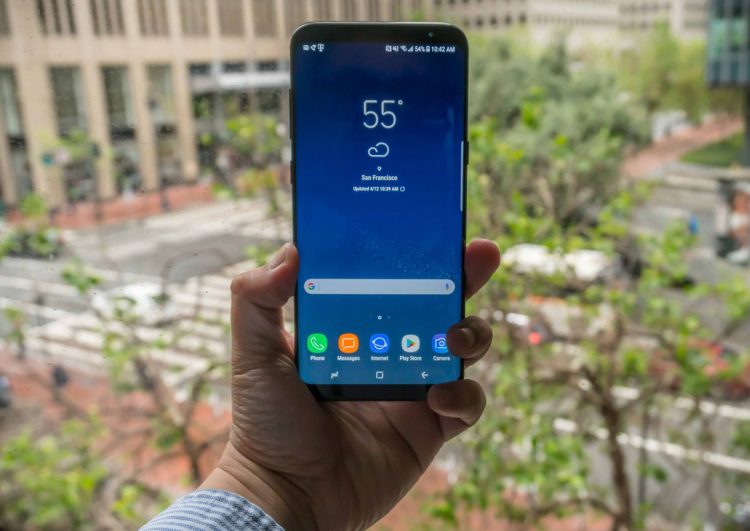testsetset
Google recently launched an augmented reality platform, ARCore, in a direct challenge to Apple’s announcement of ARKit. A familiar narrative is playing out, one in which Apple and Google will battle for platform dominance, like they’ve done with iOS and Android over the past decade.
However, Google probably won’t dominate the smartphone AR ecosystem in the same way that it has taken a huge share of the smartphone OS market with Android. Last year, Google captured 82% of the total smartphone OS market, according to Gartner. Apple’s iOS had just 17.7%.
The specter of fragmentation
Yet despite gaining this huge market share, Google’s fragmented ecosystem continues to haunt the company. There are 24,000 different smartphone devices running on seven different versions of Android software. This will make it even harder for the search giant to make compelling, robust and elegant AR experiences, as developers will need to test and optimize the apps for different versions of Android, and on different devices that use the OS. Moreover, it will be difficult to get the myriad Android smartphone manufacturers to agree on to universal standard because, by default, they will want to use any hardware differentiation they can to gain a competitive edge over their competitors.
Another huge challenge that Google will face in making ARCore succeed universally across the Android ecosystem is that AR, which overlays 3D objects into the real world, requires an elegant and seamless integration between smartphone hardware — particularly the camera and sensors — as well as software. Google will struggle here: not all Android phones run on the latest version of OS, meaning that when developers create new AR apps, those apps won’t be compatible with many Android smartphones.
In contrast, because Apple controls both its OS and the hardware that runs it, and most iPhones and iPads use the latest OS software, Apple will be able to instantaneously turn hundreds of millions of iOS devices into AR capable devices. Upon the public launch of iOS 11, this will allow Apple to create the largest AR smartphone market literally overnight — giving Apple’s AR ecosystem a clear advantage over Google’s.
ARCore’s platform limitations
Google will launch ARCore on the Samsung Galaxy S8 and Pixel phones only. These phones are two of the top-tier Android phones on the market. It’s worth noting that Google owns the Pixel, so that’s the only phone on which it can tightly integrate hardware with software, without having to deal with third parties.
Google has historically tried to dominate market share by getting big quickly, particularly in the smartphone market, as evidenced by Android’s current dominance of smartphone OS market share.
Thus, it’s likely that if Google were going to try to launch a new platform, it would do it universally across all its devices. Yet if Google could have launched ARCore to a wider line of phones, it probably would have. It’s reasonable to believe, then, that the company is already running into fragmentation issues in its mobile AR efforts. Due to the deep integration required between smartphone hardware and software for AR to work effectively, it seems Google has been forced to stick to only two high-end smartphones.
Another problem Google will face is getting its developer community on board — a robust, vibrant, enthusiastic, and happy developer community is crucial to making an ecosystem take off. Moreover, developers need to be convinced that the addressable market is big enough to really invest their time and resources in creating apps for a platform.
Because the Android ecosystem is fragmented, it limits the size of the market for developers. It’s also difficult for developers to create apps through Android because they need to make their apps compatible with multiple versions of the OS, and the thousands of devices that use the system. This will only get worse with AR, as it requires seamless integration between hardware and software.
How it all plays out
Ultimately, if you don’t have happy developers, you won’t have great content, which means you won’t have users. Just look at Microsoft’s Windows Smartphone: it failed to attract developers to build its mobile ecosystem, which former Microsoft CEO Steve Ballmer blamed for the demise of the company’s smartphone unit.
It’s possible, of course, that Google is just being cautious. It’s uncertain whether the company has some master plan that could ultimately work. However, given the problems that Google has faced with Android fragmentation thus far, it’s difficult to see how the situation will improve when AR requires an even tighter integration between smartphone hardware and software.
One possible scenario that could play out is that both Google and Apple use smartphones as an imperfect but wide-scale test to identify the most compelling use cases for AR among consumers and enterprises. This would make sense, given the ubiquity of smartphones. In addition, they could be using smartphones to build robust, experienced, and enthusiastic developer communities which will be prepared to make content for, and test out, the next era of computing: AR smart glasses.
For now, Google probably can’t beat Apple in the smartphone AR race. However, in three to five years, when we’re all wearing AR specs? It might not matter.
Michael Park is the CEO and founder of PostAR, a platform that lets you build, explore, and share augmented realities.

